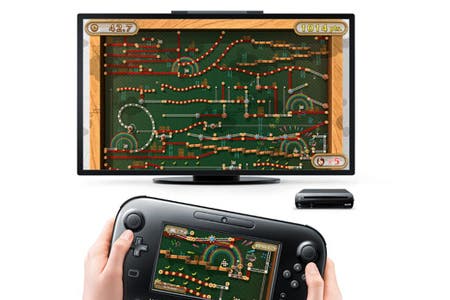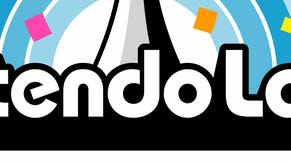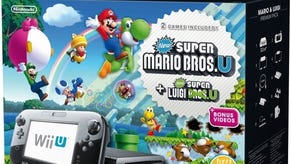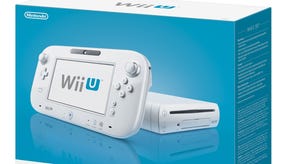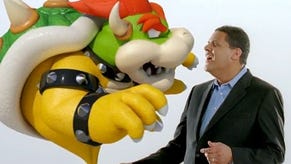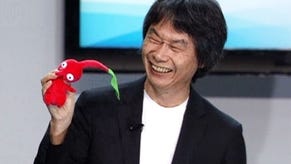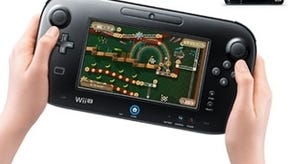Fearful Asymmetry? Assessing the Promise of the Wii U
Why Nintendo's 'new' idea might be a lot of fun.
Gaming's filled with long words these days. I'd just gotten used to 'asynchronous', for example - although I still can't spell it first go - and now here comes 'asymmetry' to mess me up even further. Asymmetrical gaming. It's straight over to autocorrect for that one, too. Damn you, double-m.
Asymmetrical gaming doesn't necessarily sound like that much fun at first. A boot versus an ant is asymmetrical, for example, but I'm not sure I want to play either side of that death match. Away from the ants and the boots I'm cautiously optimistic about the whole thing, however. Optimistic because of the source. Optimistic because of the circumstances.
The term came out of Nintendo's E3 press conference, and I'm not about to pretend that was a glorious moment for followers of the Mushroom Kingdom. Pikmin 3 looks lovely, but it doesn't look particularly surprising, New Super Mario Bros U will be fun but I doubt it's a Galaxy beater, third-party support seems to be thin once again, and two of the company's most interesting prospects - that Platinum game that looks utterly wonderful and a new freakin' Wario Ware - didn't even make the guest list.
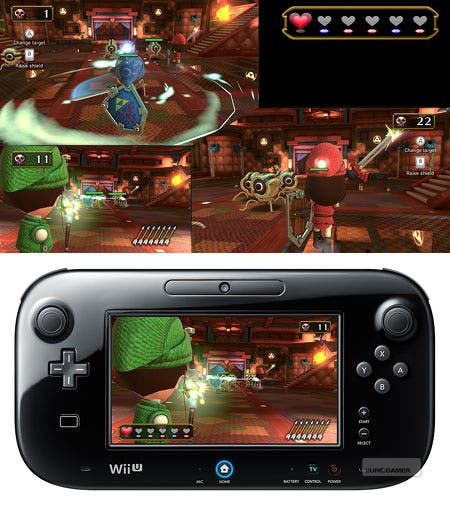
Worst of all, though, was the big showbiz ending. We all prepared ourselves for Link, for Mario, for Samus, for Cubivores (just me?) and instead we got, well a lot of them, but not the way we expected. We got Nintendo Land.
I'm pretty excited about Nintendo Land, even it should probably have been chucked in at the start of the conference rather than the end. Sure, it's a mini-game collection, but the games look great, and the fun park conceit could be lovely, too, despite the fact I'm not yet taken with the hub itself. Nintendo Land's a big deal for Nintendo, though, because the company thinks it's the new Wii Sports.
Nintendo doesn't believe it's a casual phenomenon that will put the company back on top, perhaps, but it does see it as a kind of Rosetta Stone for understanding what's fresh and what's cool about the Wii U - a console that hasn't always looked particularly fresh and cool so far.
And one of the things that's so fresh and cool about the Wii U is asymmetry, apparently, as a handful of Nintendo Land's mini-games prove, by stepping away from the 2v2s and the 1v1, and unbalancing the teams a little. How does that work?
In some pretty appealing ways, by the looks of it. In Animal Crossing: Sweet Day it sees four players wielding Wii Remotes, gathering candy while avoiding guards controlled by whoever's got hold of the Wii U game pad and its two thumbsticks. In The Legend of Zelda: Battle Quest, it sees two Remote sword fighters facing off against the game pad's bow and arrow.
Finally (for now), in Luigi's Ghost Mansion, those Remotes become torches, held by a handful of intrepid spookbusters searching a maze for a single ghoul, and the ghoul's got a game pad that gives him or her a slightly better view of the battlefield. This last one's astonishingly simple to understand when you see it in motion, incidentally, which makes the lovely Katsuya Eguchi's torturous explanations during the press conference itself even weirder. Thank God he didn't try to explain League of Legends immediately afterwards.

Asymmetry's not new, of course - Halo's Oddball is asymmetrical for starters, as is StarCraft, good ol' Blockbusters, and dozens of other multiplayer variants and colourful indie games knocking about the place. Asymmetry's not even new to Nintendo, actually.
In fact, Luigi's Ghost Mansion is just one more example of the Wii U harking back to that weird GameCube non-starter connectivity, in which fans cobbled handhelds to home consoles with chunky little wires. I always quite liked connectivity, mostly because everyone else hated it and I'm a Nintendo hipster, and partly because it gave us Pac-Man Vs., which Ghost Mansion appears to take as its basic template. I had to buy R: Racing Evolution to get my copy (which means that I really earned it) and I loved playing Pac-Man on the rare occasions I had a bunch of friends around who could put up with the faff of all those cables just itching to plait themselves together, and all that passing the GBA about, making sure the reflective screen ended up under an overhead light each time.
What's new with Wii U, then, is that Nintendo doesn't really have much of a choice about asymmetry anymore. By putting so much tech in the Wii U controller, the company's almost certainly created a situation where it's a rare family indeed that will afford more than one of them, even if the hardware could handle it in the first place.
It's one, maybe two, Wii U controllers alongside a load of Wii Remotes or Classics or whatever else you can plug in to the new machine, then, and the games you play on that machine had better accept that - and should hopefully reflect the fact in interesting ways. Asymmetry's the solution to a problem that Nintendo has caused for itself, in other words, and I suspect that's the reason that - over the next few years - we may get to see the company at its most creative.
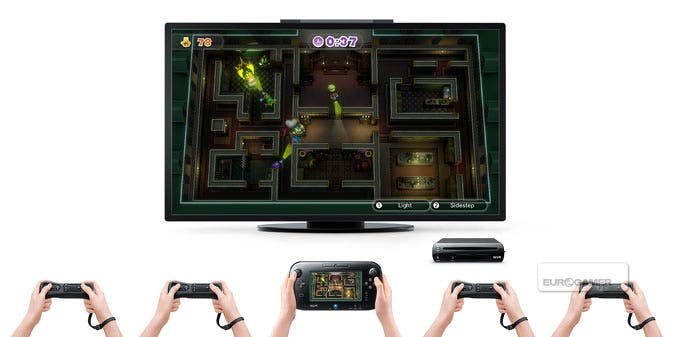
Nintendo's always at its best in a jam, or at least it certainly seems that way a lot of the time. The horrible camera control options on the Wii led EAD Tokyo to throw Mario into space, for example, where a camera simply didn't matter, while the company's response to the sheer power and grown-up stylings of the PSP was the weird collection of different inputs that came together to form the DS - a console that looks like Fred Flintstone could have designed it.
That didn't turn out too badly in the long run. Nintendo Land doesn't look particularly ground breaking just yet, but it's the first volley, hopefully. The DS kicked off with threadbare pleasures like Yoshi's Touch and Go, remember. It ended with weird, endlessly inventive treats like Kirby Mass Attack.
Besides, I find it hard to believe I would ever choose to fire up the Wii U for traditional multiplayer on one of the next generation's bigger third-party titles in the first place. Those games probably aren't going to look as good as they will on the PC or other machines (although Sony and Microsoft may really surprise us with their new directions), Nintendo's got a lot of catching up to do in terms of online services, and I'd always rather play that sort of stuff with a more traditional pad in my hand anyway.
The Wii U's going to have to be about playing something different - and playing it locally a lot of the time, most likely, since Nintendo's message of "play together" doesn't seem to mean exactly the same thing as "play online" judging from the typically wretched fake family the publicity team trotted out after the press conference was finished.
If you're a fan of worrying, of course, there's still plenty about the Wii U to fret about. Without multitouch - as far as I'm aware - that controller's going to feel fairly basic the first time you go to pinch the screen and find out you can't, and if third parties struggled to mint gold from the Wii, they're presumably going to struggle just as much with its successor. At least Nintendo's not competing directly with any of the other next-gen platform holders, though. That feels like a safe bet even before Sony and Microsoft have released details of their hardware, and before Apple's decided if it wants to disrupt the living room consoles in the same way it re-designed the handheld market. Nintendo's strategy, as ever, is asymmetrical.
